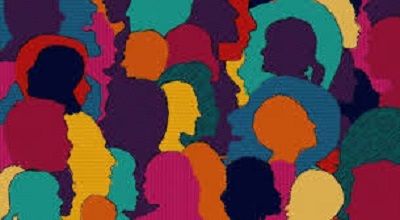Multicultural Education
Multicultural Education is an approach to teaching and learning. That recognizes and values the cultural diversity of students. And aims to promote inclusivity, equity, and social justice within educational settings. The primary goal of multicultural education is to provide all students, regardless of their cultural background. With an equitable and enriching educational experience that prepares them to thrive in a diverse and interconnected world.
Key principles and components of multicultural education include:
- Recognition of Cultural Diversity: Multicultural education acknowledges the existence of diverse cultural groups within society and within the classroom. It values the contributions of different cultures and seeks to foster an environment. Where students’ cultural backgrounds are respected and celebrated.
- Inclusive Curriculum: Multicultural education involves incorporating diverse perspectives, voices, and experiences into the curriculum. This includes studying literature, history, and other subjects from various cultural viewpoints and including the contributions of historically marginalized groups.
- Equity and Social Justice: It emphasizes the importance of addressing social inequalities. And advocating for justice within and beyond the classroom. This may involve discussions about privilege, discrimination, and social issues to promote critical thinking and social awareness.
- Cultural Competence: Multicultural education encourages educators to develop cultural competence. Which means having the knowledge, skills, and attitudes necessary to effectively teach and interact with students from diverse backgrounds. This includes understanding cultural differences, communication styles, and learning preferences.
More Read…
- Inclusive Teaching Methods: Teachers are encouraged to use instructional strategies. That caters to the diverse learning needs and preferences of their students. This might involve using diverse teaching materials, group work, and differentiated instruction.
- Promotion of Positive Interactions: Multicultural education fosters positive interactions among students from different backgrounds. It promotes tolerance, empathy, and the ability to work collaboratively with people from diverse cultures.
- Critical Thinking: Students are encouraged to critically examine cultural stereotypes, biases, and prejudices. They learn to think critically about the information they encounter and develop a more nuanced understanding of the world.
- Community and Parent Involvement: Schools often engage with parents and the broader community to create a more inclusive and culturally responsive learning environment. This collaboration can help ensure that students’ cultural needs are met both in and outside of the classroom.
Benefits & Examples of Multicultural Education
Multicultural education offers numerous benefits for both students and society as a whole. Here are some of the key advantages of multicultural education, along with examples illustrating how it can be implemented:
Benefits of Multicultural Education:
- Promotes Diversity and Inclusion: Multicultural education fosters an inclusive learning environment. These students from various cultural backgrounds feel valued and respected. It promotes the idea that diversity is a strength rather than a limitation.
- Enhances Cultural Awareness: Students gain a deeper understanding and appreciation of their own cultural heritage. As well as the cultures of their classmates. This awareness can lead to greater cultural sensitivity and empathy.
- Reduces Prejudice and Stereotyping: Multicultural education challenges stereotypes and biases by encouraging critical thinking and discussions about cultural differences. It helps break down prejudices and promotes more open-minded attitudes.
- Prepares Students for a Globalized World: In an increasingly interconnected world, multicultural education equips students with the skills and knowledge. They need to interact and collaborate with people from diverse backgrounds in both local and global contexts.
- Improved Academic Achievement: Studies have shown that when students see their own culture reflected in the curriculum. When they feel valued and included, their academic performance tends to improve.
- Cultural Competence: Multicultural education helps students develop cultural competence, which is an essential skill in today’s diverse workplaces and communities. This competence includes the ability to communicate effectively with people from different backgrounds and navigate culturally diverse environments.
- Enhanced Critical Thinking: Examining different cultures and experiences encourages critical thinking. Students learn to question assumptions, analyze information critically, and develop a more well-rounded understanding of complex issues.
Examples of Multicultural Education:
- Incorporating Diverse Literature: Teachers can include literature from various cultural backgrounds in their reading lists. For instance, reading novels, short stories, and poetry by authors from different countries. Cultures expose students to a wide range of perspectives and voices.
- Cultural Celebrations: Schools can host cultural events and celebrations. That showcases the traditions, food, music, and art of different cultures within the school community. These events can promote cultural exchange and understanding.
- Diverse History Curriculum: Expanding the history curriculum to include the histories and contributions of different cultural groups is essential. For example, teaching about the civil rights movement alongside the struggles and achievements of indigenous peoples and immigrant communities.
- Guest Speakers and Cultural Experts: Inviting guest speakers or cultural experts from various backgrounds to share their experiences. And knowledge can provide students with firsthand insights into different cultures.
- Multilingual Education: Offering language courses in languages spoken by students within the school community. Offering foreign language courses can be part of multicultural education. Learning a new language also exposes students to different cultures.
- Service Learning Projects: Encouraging students to engage in service learning projects. That address issues faced by marginalized communities can be a practical way to connect classroom learning to real-world issues related to social justice and equity.
- Cross-Cultural Dialogue and Discussions: Facilitating classroom discussions and activities that encourage students to share their cultural experiences, beliefs, and traditions can promote mutual understanding and empathy among classmates.
- Diverse Visual Arts and Music: Incorporating art and music from various cultures into the curriculum can help students appreciate the richness of artistic expression across different societies.
Final Words
Multicultural Education is not just about acknowledging cultural diversity; it’s about leveraging diversity as a valuable educational resource. By doing so, it prepares students to become informed, empathetic, and culturally competent individuals. Who can contribute positively to a globalized society? Incorporating these examples into educational practices can help create a more inclusive and enriching learning environment. That prepares students for a diverse and interconnected world.
